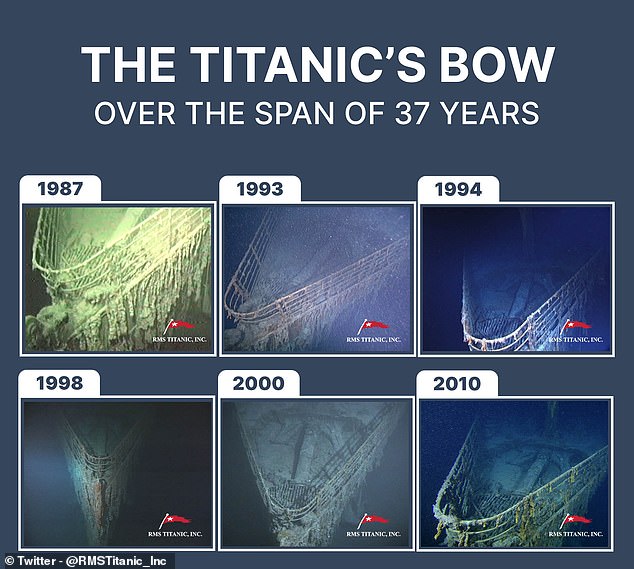Even after a century underwater, the bow of the Titanic remains one of the most magnificent and haunting sights in the ocean.
However, a new survey of the wreck site has revealed that the railing, made famous by Jack and Rose, is now rusted away.
Disturbing images captured by underwater robots over the years show the bow of the massive ship has been gradually eroding.
Experts say its metal construction and frequent human visits mean it is only a matter of time before the Titanic collapses.
Dr Rodrigo Pacheco-Ruiz, archaeological data manager for HMS Victory and a maritime archaeologist at the University of Southampton, told MailOnline: “The realistic view is that because it’s such a large metal object, it won’t be there for very long.”
Chilling images reveal how the Titanic’s iconic bow has deteriorated in the 37 years between 1987 and 2010

Between July and August, two ROVs descended onto the Titanic and discovered that the ship’s bow is now beginning to collapse.
Earlier this week, RMS Titanic Inc, the company that owns the salvage rights to the ship, released new images and footage of the sunken ocean liner.
Videos and images recorded by remotely operated vehicles (ROVs) captured shocking evidence of how quickly the ship was deteriorating.
Most notably, a 15-foot (4.5 m) section of the forward railing appeared to have disappeared from the bow of the ship.
Later, 3D scans of the surrounding area revealed that the rail had collapsed and fallen in one piece to the ocean floor.
The Titanic sank to its present resting place on April 15, 1912, resulting in the deaths of 1,500 passengers and crew.
Since then, it has remained almost unchanged 3,800 metres (12,500 feet) beneath the waves at a site off the coast of Newfoundland, Canada.
An expedition to the Titanic site this summer revealed that the railings made famous by Jack and Rose in the film had collapsed sometime in the past two years.
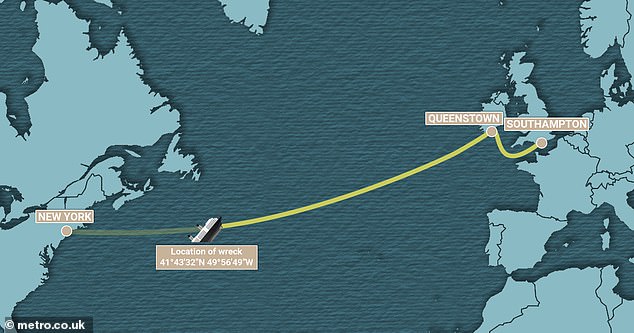
For the past 110 years, the wreck of the Titanic has lain 350 nautical miles off the coast of Newfoundland, Canada.
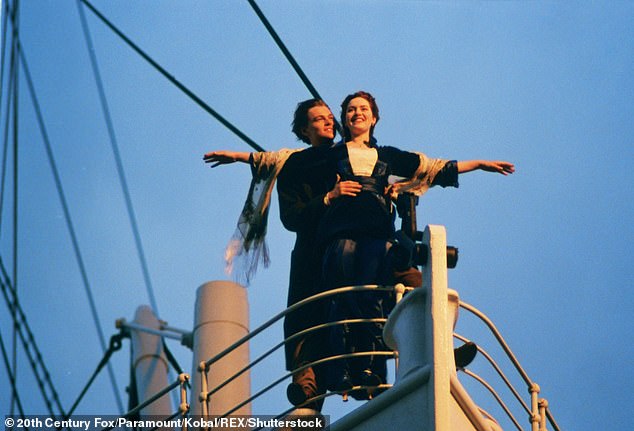
This railing was made famous by scenes starring Leonardo DiCaprio and Kate Winslet as Jack and Rose in the 1997 film Titanic (pictured)
When explorers first located the wreck in 1985, they were surprised to find that the forward railing and bow of the great ship were still remarkably well preserved.
However, as these images reveal, each subsequent expedition to the wreck has revealed further deterioration.
Dr Pacheco-Ruiz explains that the salty, oxygen-rich waters of the North Atlantic Ocean are particularly bad for the Titanic’s metal structure.
As the metal is exposed to this chemically active environment, the ship’s iron oxidizes and forms thick layers of iron oxide.
Comparing images taken in the 1990s with those taken in 2010, you can see how long rust stalactites called “rusticles” have been accumulating on the railing.
The Titanic’s metal construction makes it particularly vulnerable to decay in the salty waters of the North Pacific. Large rust stalactites can be seen forming on the bow between 1993 (left) and 2010 (right).
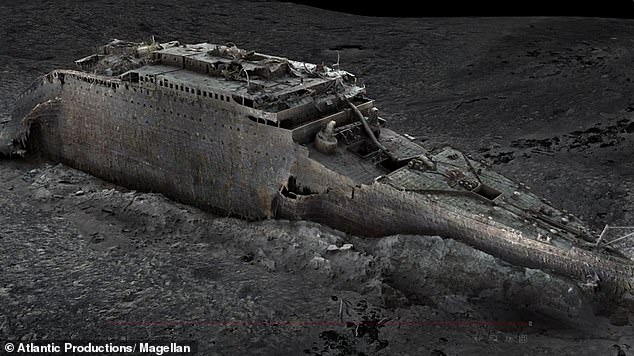
Much of the ship is still intact, but experts warn that the wrought iron rivets holding it together are eroding extremely quickly.
“Basically, it’s the iron from the railing coming overboard and creating layers of iron oxide that weaken the metal,” explains Dr. Pacheco-Ruiz.
While the front railing collapse is sad, these images also hint at a much bigger problem.
The sheets of metal used to construct the Titanic’s body were made of mild steel, but the rivets used to join them together were all wrought iron.
Dr. Pacheco-Ruiz says: ‘Wrought iron is probably one of the worst materials you can find in water because it rusts very quickly and easily.
‘The problem with the Titanic is that it is built with wrought iron bolts; once they lose their integrity, the mild steel plates begin to sink and collapse.’
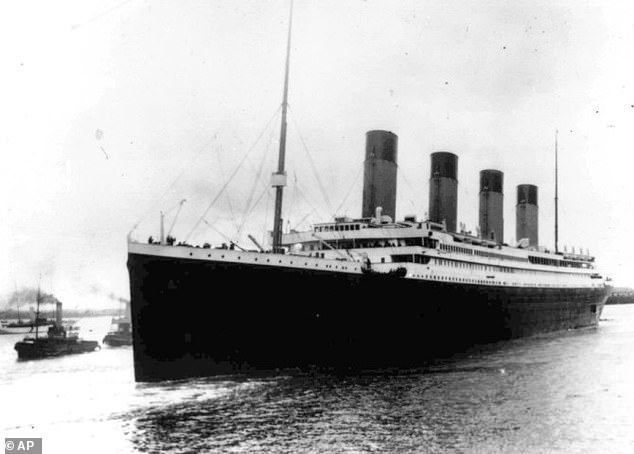
The Titanic’s mild steel cladding has survived well in the cold and darkness of the ocean floor, but experts say it is now more fragile than it appears.
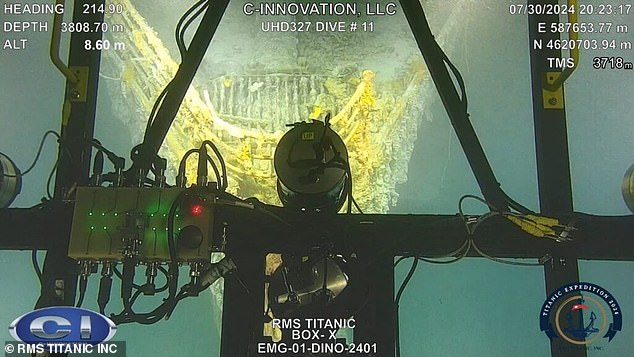
Constant visits to the Titanic wreck site may be hastening the ship’s demise as changes in the water column push and pull on the fragile structure.
Since 1994, RMS Titanic Inc. has held exclusive salvage rights to the wreck, making it the only organization legally authorized to remove artifacts.
The company claims to have recovered “thousands” of pieces from the wreck in nine separate expeditions during that time.
Additionally, approximately 250 people have visited the site as part of tourism operations such as Ocean Gate and other archaeological projects.
While many of these expeditions are undertaken with the aim of studying the Titanic, the constant visits to the site only accelerate its eventual demise.
“Unfortunately, human action is probably what is damaging the site the most,” explained Dr. Pacheco-Ruiz.
“We are very destructive in our visits because we do not really understand the fragility of this type of shipwreck.”
As ROVs or other submersibles move around the wreck, they push water over the fragile structure, and as items are collected, contact with the ship is inevitable.
Sadly, experts say the Titanic is inevitably doomed to collapse at some point in the future.
Dr Pacheco-Ruiz added: “It’s very difficult to say when it will happen, but it’s definitely not as solid as it seems.”


